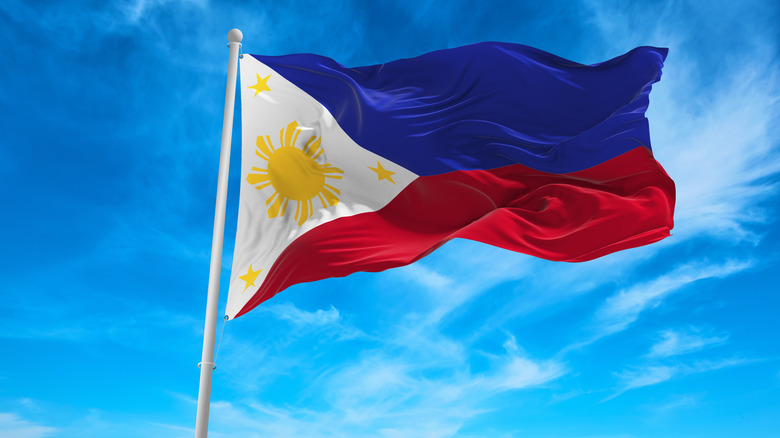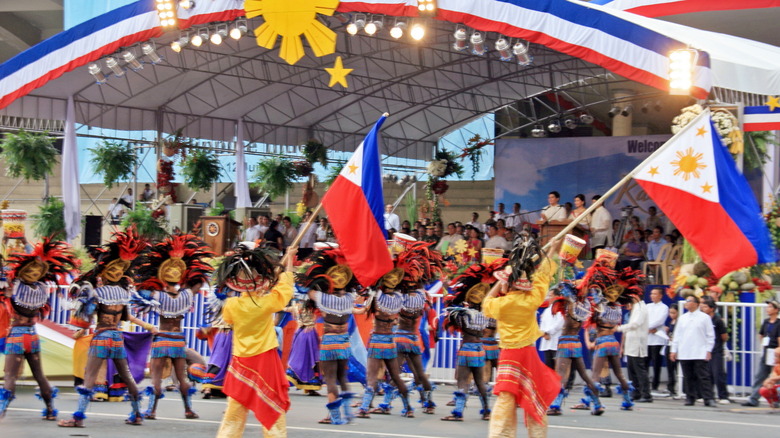Why The Philippines Celebrates The 4th Of July
The United States celebrates Independence Day on July 4, and for a time, the Philippines also honored its independence on that date. While the U.S. celebrated the signing of the Declaration of Independence on July 4, the Philippines celebrated its freedom from U.S. colonization. Ironic, isn't it?
The Philippines was under Spanish control for more than 300 years before the United States took over. The Americans and the Spanish were at war in 1898, and Spain eventually proposed a cease-fire. The Treaty of Paris was signed on December 10, 1898, officially ending the Spanish-American War, per the Department of State. As part of the deal, the Spanish sold the Philippines to the U.S. for $20 million.
Prior to being colonized by the U.S., the Philippines was already declared independent, either by their Spanish colonizers or themselves. In 1896, Andres Bonifacio, the "Father of the Philippine Revolution," proclaimed the Philippines' independence together with the Katipuneros (an anti-Spanish group) and tore their cedulas (identity cards) to celebrate the emancipation from Spain. President Emilio Aguinaldo then officially proclaimed the country's independence on June 12, 1898, per Esquire.
The Philippines fought the change of hands regarding their colonization, and in 1899, the Philippine-American War began. Although that war lasted for a little more than a decade, President Theodore Roosevelt announced the United States' victory on July 4, 1902, per National Geographic.
The Philippines gains independence
The United States' rule over the Philippines lasted from 1898 to 1933. In 1934, U.S. President Franklin Roosevelt signed the Tydings-McDuffie Act, which stated that the Philippines would go through a transitional period of 10 years and be declared independent on July 4, 1945, according to The Atlantic.
The United States declared the Philippines a free country on July 4, 1946. Manuel Roxas took his oath as the president and eliminated the country's pledge of allegiance to the U.S., which was a prerequisite to independence, per Offical Gazette. From then forward, the Philippines celebrated its Independence Day on July 4. Vicente L. Rafael, a professor at the University of Washington, shared his opinion on the irony of the date. "The Fourth of July is supposed to be a declaration of independence. But for Roosevelt in 1902, the Fourth of July was a declaration of conquest," he said, per National Geographic.
Today, the Philippines no longer celebrates Independence Day on July 4. In 1962, Philippines' President Diosdado Macapagal officially changed the country's Independence Day from July 4 to June 12, the date when the Philippines was declared free from the Spanish, as reported by Esquire. Macapagal said that June 12, 1898, was the "true birthday of an independent Filipino nation" that was gained through acts of nationalism and patriotism by the country's heroes.
Although July 4 is no longer the Philippines' Independence Day, it is still honored as Filipino-American Friendship Day.

